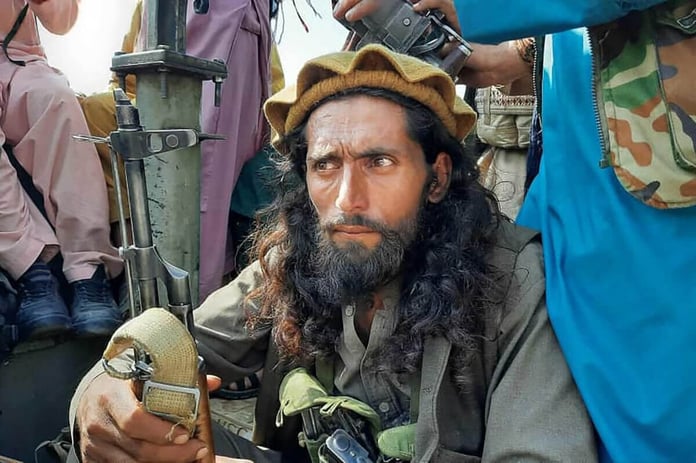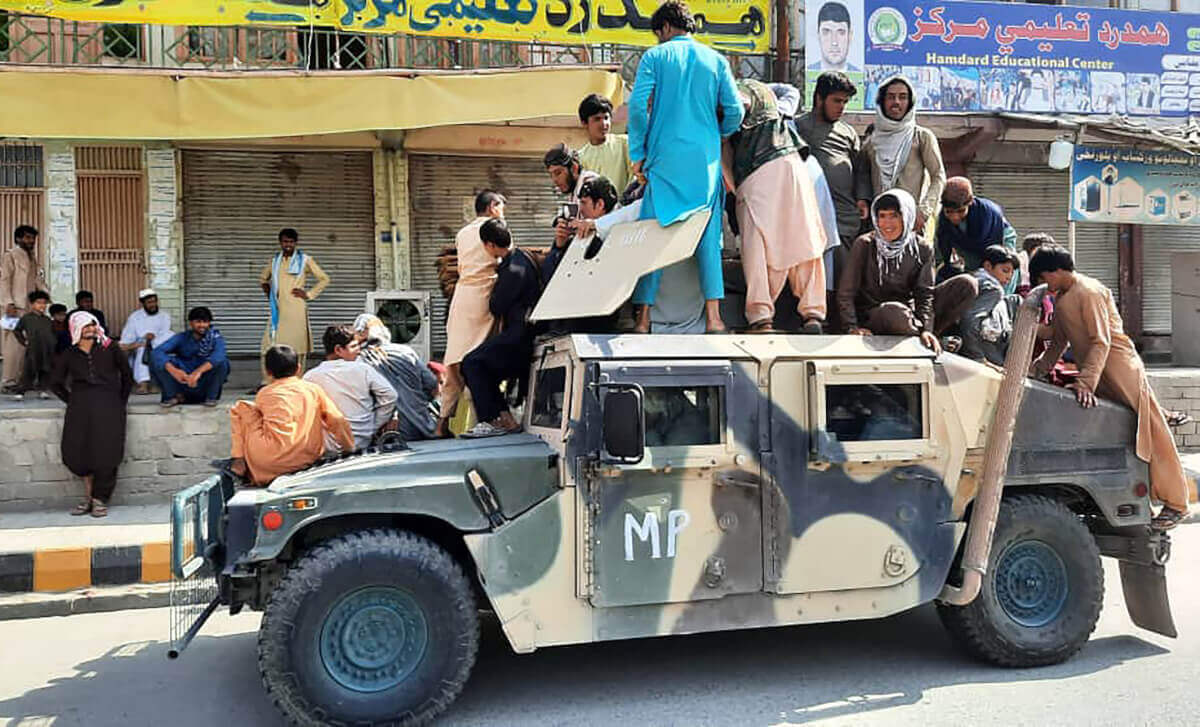
The 350,000 Afghan soldiers were not enough to stop the advance of Taliban fighters to the capital, Kabul, which they entered on Sunday, while their representatives are negotiating the next stage.
After it became clear that nothing would turn the game around, Afghan President Ashraf Ghani abruptly left Kabul, apparently achieving what the militants had wanted from the start: full rule of the country two decades after they were driven from power.
Military helicopters transport diplomats and Western officials from Afghanistan to other countries, such as Pakistan, while civil airlines, such as Emirates Airlines, have announced the suspension of their flights to the country, but the security situation is rapidly deteriorating as the movement’s fighters enter the capital.

How did the Taliban regain strength?
After its ouster, the Taliban dispersed, and some of its leaders found sanctuary in Pakistan, where they began to fortify themselves with the help of the Pakistani security establishment, according to the Washington Post .
While the US presence in Afghanistan extended the movement’s “legitimacy to resist colonialism”, corruption in the Afghan government was making matters more difficult, according to the American newspaper.
For the past twenty years, there have been reports of fake names in the ranks of the Afghan security forces, and of betrayals by some of their leaders.
One of the military garrisons in the city of Imam Sahib, for example, withstood the Taliban advance for two months, but the “corruption” and the delay of the army commanders in supplying the garrison fighters and leaving them to their fate, finally pushed them to surrender, as a newspaper published Wall Street Journal .
The newspaper also says that “the Afghan army was built on a logistical doctrine similar to the doctrine of the American army, where aircraft play an important role in supply and protection, but when the Americans stopped or reduced their support, the Afghans found themselves unable to work.”
However, it seems that “mismanagement” by the Afghan government is the most prominent title that summarizes what happened.
The Wall Street Journal says that “the Afghans had 20 years to make adjustments, and they knew a year ago the agreement with the Taliban and the final US intention to withdraw from the country, but they did nothing significant.”

As district after district fell into the Taliban offensive this summer, with no apparent support from the Afghan National Army and police forces, other soldiers simply deemed it no longer worth fighting.
“Everyone gave up their weapons and ran away. We did not receive any help from the central government, so the district fell without any fight,” Rahimullah, a 25-year-old soldier who joined the army a year ago and served in the Shahrbuzurg district of northeastern Badakhshan province, told the newspaper.
And on Saturday, the movement published a video of the surrender of a military commander, who handed over the Taliban all the equipment and weapons of his force, in exchange for a safe exit for him and his soldiers.
And the Washington Post says that this “tactic” from the Taliban ensures that the soldiers are not relentless in defending their positions, and helps the collapse of the army.
“For two decades now, the Taliban has been slowly carving out village after village in a highly sophisticated game of popular mobilization,” Robert Cruz, an Afghanistan expert at Stanford University, told the Washington Post.
During this mobilization campaign, the Taliban not only focused on what they describe as “the principles of Islamic law” to attract supporters, but also launched a coordinated campaign of intimidation and violence, assassinating dozens of police and army recruits, and targeting intellectuals, civilians, and social figures opposed to them in an effort to silence all voices. critical.
Challenges for the movement
But the relatively smooth arrival in the capital may not be the end of the story for the movement, which does not appear to have a single leader, or even a known central leadership council, and will return to the rule of a people different from the one it left in 2021.
There does not appear to be a single leader of the Taliban movement, which is currently led by Hebatullah Akhundzada, as it appears that power is distributed among several key leaders.
It remains unclear whether life under the Taliban will be the same as it was before. While the media reported the statements of a spokesman for the movement, he said that the Taliban “does not plan to isolate women, and it will allow them to educate and work in exchange for observing the veil.” The movement has a history of extremism, particularly against women and the most vulnerable social groups in society.
During the last twenty years, civil society in Afghanistan has rebounded dramatically, women have taken public office in Kabul and small towns, mobile phones and social media have proliferated, and the Internet is almost ubiquitous.
“A lot of people are better connected to the world through social media and they say hey, why can’t we have a life like people abroad?” says expert Robert Cruz.

And Bloomberg says that “while the Taliban issues statements about ensuring that the transition process is completed safely and securely, without endangering anyone’s life, property, and honor, the danger is that their actions will be completely different.”
In addition to the social challenges, there are also other challenges that usually do not work with the threat of weapons or media blackout.
The Taliban now faces the responsibility of running an entire country, independent of American and Western aid, and the country does not seem – especially in these circumstances – attractive to Western investments and suffers from a severe shortage of resources.
In exchange for running an insurgency, based largely on donations, royalties, kidnapping ransoms, and the opium trade, the state administration is putting the Taliban on the line once again, especially since its main neighbors, Pakistan, Russia and Iran, do not seem to come to its aid soon.
The Taliban movement first rose to power in Afghanistan after fighters who participated in the fight against the Soviet forces gathered to form an armed movement, most of whose members belong to the Pashtun ethnicity, the largest ethnic group in the country.
The founder of the movement, Mullah Muhammad Omar, had established it to secure the city of Kandahar in the 1990s, after it was suffering from a very bad security situation.
In the fall of 1996, the Taliban seized Kabul and declared an “Islamic regime” in the country, imposing its hard-line rules with great brutality.
The movement obtains arms supplies mainly by taking advantage of the booming smuggling operations in the region.
But it also views the Afghan army’s warehouses as its own, where it has seized thousands of pieces of weapons, equipment and armored vehicles, and after Kabul fell completely in the hands of the movement, it will have planes and helicopters in its hands for the first time.
Even with the suspicion that it has pilots, or spare parts and maintenance technicians, the movement’s possession of aircraft is certainly not good news for its neighbors, especially the Russians, whom the movement has fought for so long.












